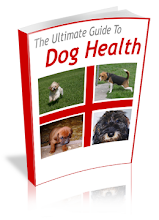Provided by Dominique Jarry-Shore, THE CANADIAN PRESSMONTREAL - Barry Glebe had tried everything to stem his dog Lila's chronic stomach problems, but to no avail.
His adopted West Highland white terrier had suffered terribly in the six months she'd lived with him and, despite trying every dog food possible, nothing seemed to work.
That was until Glebe discovered the wonders of home-cooked pet food.
"Within two weeks the dog had changed totally," Glebe said.
"Besides her body being in shape, she was a much happier dog."

Like Glebe, some Canadian pet owners are looking for ways to improve the health of their furry companions with a little home cooking.
Some pet owners have become more vigilant since several dozen cats and dogs died from melamine-laced pet food.
But the movement is also sparked partly by celebrities, some of whom post recipes online for pet food that can be made at home.
A belief that animal byproducts like bone and cartilage - a common pet food ingredient - are unhealthy, is also a factor considered when contemplating a switch in diet.
It's an allegation that is denied by pet food producers.
"Animal byproducts are simply things that humans don't eat but they're perfectly nutritional and safe for pets, and in fact they provide an excellent source of protein and other nutrients," said Martha Wilder, the executive director of the Pet Food Association of Canada.
Wilder added that the pet food recall of 2007 has led to widespread testing for melamine and more surveillance of pet food suppliers.
But despite those assurances, pet owners continue to look for alternatives.
"Right now, we're just trying to keep up with demand in Canada," said Paul Quigley, who runs Pets4Life, a small family business in Owen Sound, Ont.
The raw-food diet has come under fire in the past. The Canadian Veterinary Medical Association and the Canadian Public Health Agency believe such a diet risks sickening pets and humans who come in contact with the food.
But Quigley said he's seen a steady increase in demand and likens the product's popularity to owners becoming more conscientious about their pet's diet and wanting to feed them human-grade food.
"More and more we're finding that pet owners are just trying to feed healthy, like they're eating themselves," he said.
Tracy Martin, who runs Evive, a Montreal homemade pet food business, said she's been encouraged by the response since opening up shop last fall.
Digging her gloved hands into a concoction of fresh ground beef, heart, liver, green beans, apples and rice in her bright storefront kitchen, Martin muses that the entire pet food industry is about to change and that "it's crazy" to think pets can live on a diet of processed pet food alone.
"The first thing we do when someone has high cholesterol, or heart problems, or diabetes, or whatever illness, is we look at the diet," she said. "It's what sustains our bodies."

Martin, along with a pet nutritionist, developed a seasonal menu made largely from local Quebec produce.
Her dog and cat food is "gently baked" and includes ingredients like wild salmon oil, freeze-dried bone meal from New Zealand pasture-fed cattle, and kelp from Canadian ocean waters.
This food is a far cry from the long list of ingredients found in store-bought pet food - just don't call it gourmet.
"Gourmet for me is like a side of pilaf with onion confit," Martin said. "This is just wholesome real food."
Still, the homemade diets aren't without some controversy and the veterinary association recommends a pet owner consult their veterinarian before trying one out.
Montreal veterinarian Enid Stiles said homemade meals can sometimes "miss the boat" when it comes to appropriately meeting the nutritional needs of pets.
"It's not to say that we (veterinarians) don't approve of these home-cooked diets," she said.
"It's just that we're concerned that they're not meeting the needs of dogs or cats."
Safeguards are needed to ensure pet food meets certain requirements, said Louis McCann, the president of the Pet Industry Joint Advisory Council of Canada, a pet industry trade association.
"You have to look at the quality of the process and not short-term, but long-term," he said.
"Canadian pet food is subject to scrutiny by different government agencies and I think anybody who attempts to market pet food has to be subject to the same scrutiny - for the protection of the animals, the pets, but also for the public."
Pet food is the largest pet product expenditure in the U.S., totalling $16.8 billion in 2008 according to the American Pet Products Association website.
A LOT OF INTERESTING STAFF: THE COMPLETE GUIDE TO YOUR DOG NUTRITION































